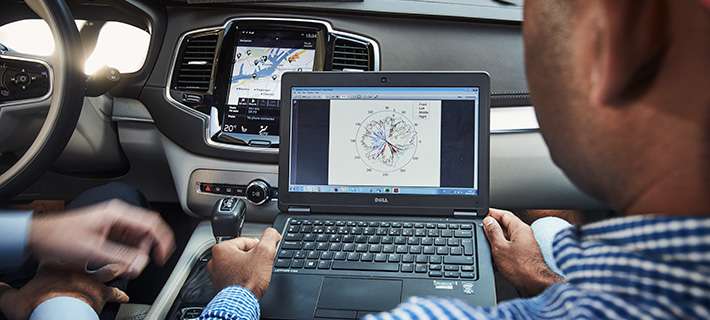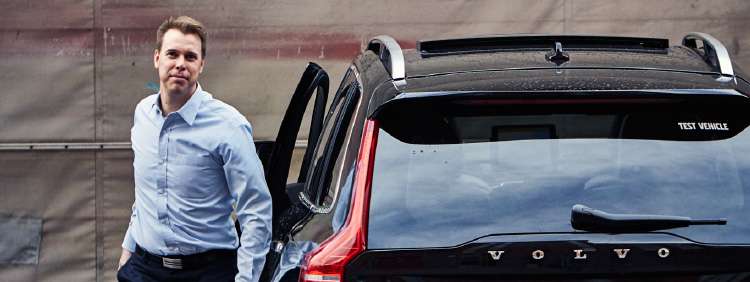Designing the best car antenna

The global car fleet is rapidly becoming increasingly connected – which puts high demands on stable, robust communication. This will mainly be ensured by the antennas of tomorrow.
If you are at home watching a film and the TV picture suddenly freezes, it's probably not a disaster. But in the future, if you are driving towards a junction, in which a cloud-based automated driving application optimally guides you and other vehicles through the junction at full speed – well, in that situation communication must always work," says Mikael Nilsson at Volvo Cars.
Of course, it will be a while before this becomes a reality, but other new communication applications are already being developed that demand a very high level of reliability.
Volvo's Road Friction Information is one example. The idea is that cars ahead share information about road conditions to nearby vehicles through the cloud, for example about icy or slippery conditions, which is intended to make the surrounding cars to take precautions in time. In such circumstances, a stable link can mean the difference between life and death. The same applies to E-call, the service for automatic electronic emergency calls from cars to emergency call centres that will become standard in all new cars in Europe by 2018.
What happens if a car flips over and the antenna on the roof breaks? "Within Chase we have examined various concepts for how to best position antennas on cars," says Nilsson.

The aim has also been to develop the antennas of tomorrow.
"You can build better receivers, switch to better cables between the antenna and the receiver, but that is much more expensive than building better antennas. They will be the most crucial element that affects the performance of the communications system."
Within ChaseOn, Volvo aims at developing an antenna concept that supports new 5G technology. It requires higher frequencies, which in turn demands more of the antenna's performance and position.
"We also plan to develop antennas that are compatible with cars made of materials such as carbon fibre and plastic, which lack a ground plane."
For Volvo Cars, the Chase collaboration has also had what Mikael Nilsson describes as "softer values".
"It is important for us to be part of research hubs, to be visible in these contexts, for instance at conferences around the world at which Chalmers' researchers participate. It gives us a good reputation and spark enquiries about new projects and collaborations. This exchange between Volvo and universities is perhaps the most important of all."
Provided by Chalmers University of Technology



















